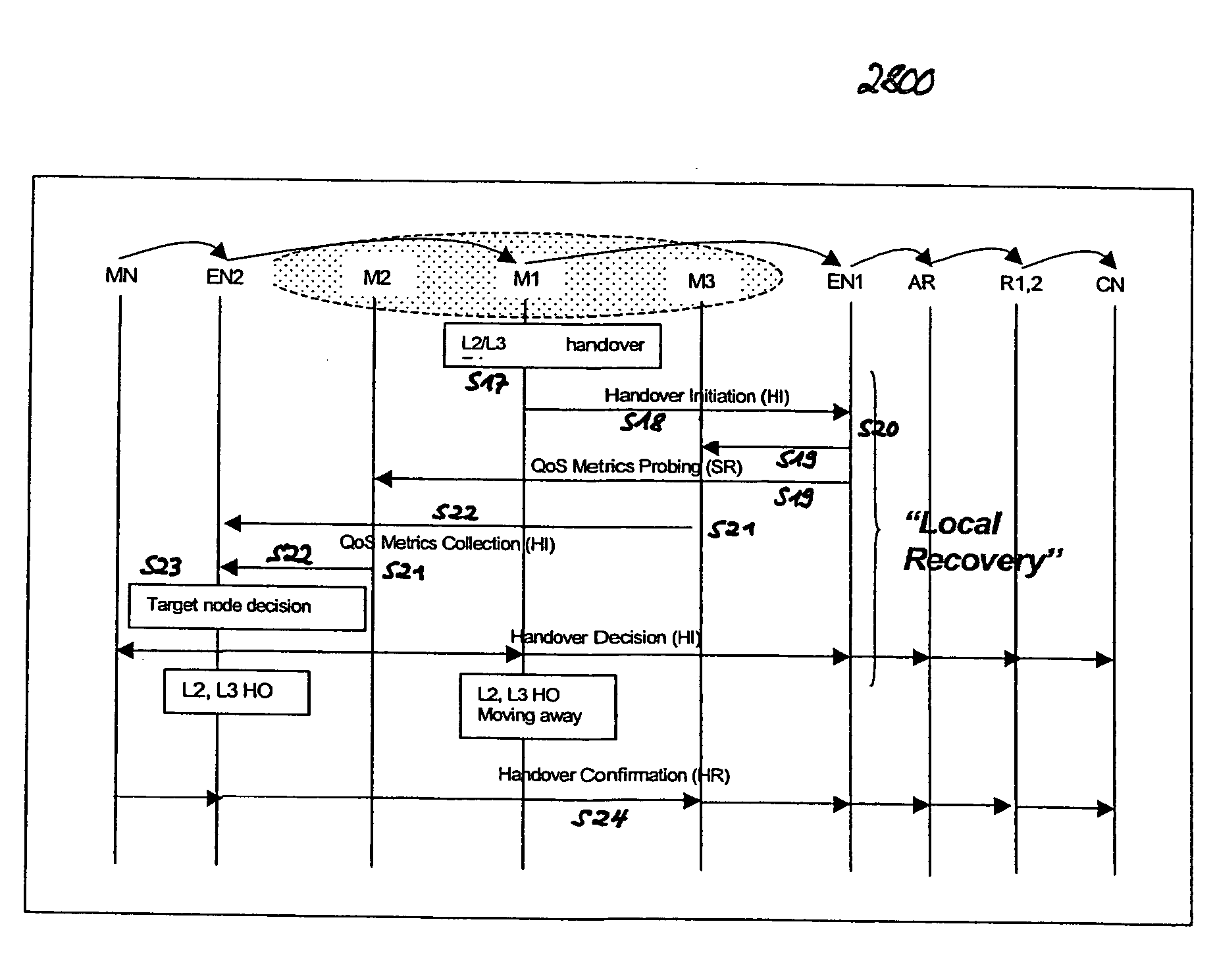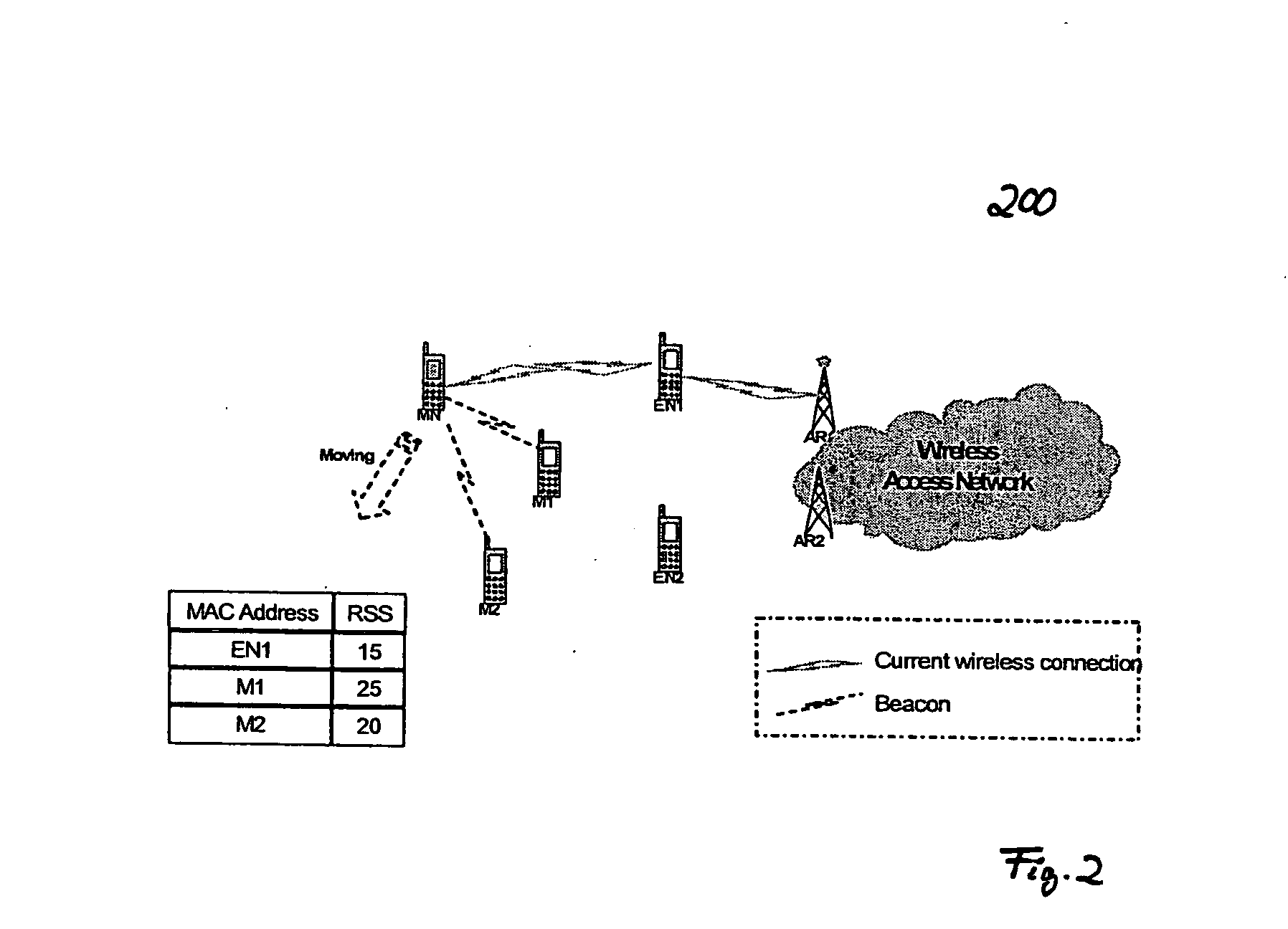QoS-awar handover procedure for IP-based mobile ad-hoc network environments
- Summary
- Abstract
- Description
- Claims
- Application Information
AI Technical Summary
Benefits of technology
Problems solved by technology
Method used
Image
Examples
Embodiment Construction
[0092] In the following, the preferred embodiment of the present invention as depicted in FIGS. 1 to 37 and the particular steps of the handover procedure according to the present invention shall be explained in detail. The meaning of the symbols designated with reference numerals and signs in these figures can be taken from Table 2.
[0093] 1. Handover candidates selection
[0094] The proposed QoS-aware handover procedure is designed to be independent of access technologies based on the data link layer (layer 2). It can be triggered by data link layer (layer 2), network layer (layer 3) events or an explicit request generated by an application.
[0095] The quality of a wireless connection mainly depends on a factor indicating the strength of a received signal (RSS). It shall be presumed that aside from the MAC address a low-level parameter indicating the link quality (such as RSS) is submitted within the received BEACON signals. Based on these BEACON signals, a mobile node MN is capable o...
PUM
 Login to View More
Login to View More Abstract
Description
Claims
Application Information
 Login to View More
Login to View More - R&D
- Intellectual Property
- Life Sciences
- Materials
- Tech Scout
- Unparalleled Data Quality
- Higher Quality Content
- 60% Fewer Hallucinations
Browse by: Latest US Patents, China's latest patents, Technical Efficacy Thesaurus, Application Domain, Technology Topic, Popular Technical Reports.
© 2025 PatSnap. All rights reserved.Legal|Privacy policy|Modern Slavery Act Transparency Statement|Sitemap|About US| Contact US: help@patsnap.com



